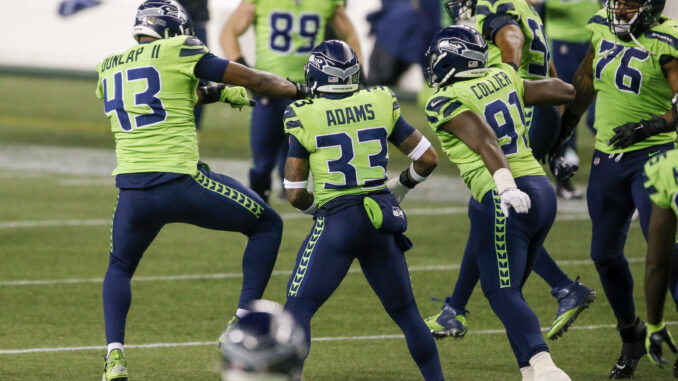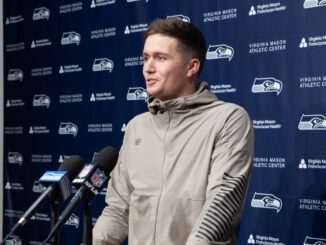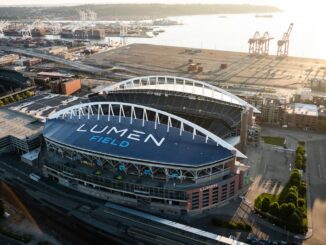
The Seattle Seahawks were unequivocally a good team during the 2020 regular season. Yet, the fans will bemoan about what a struggle it is to watch their favorite team on any given Sunday. It’s a truly odd dichotomy. The Seahawks have been one of the most successful NFL franchises in the 2010s, and yet it feels a tad unfulfilling to consume the game on TV since 2015. Many people would point to the lack of dominance and the failing of the Legion of Boom, but there are plenty of enjoyable teams in the league that aren’t pure title contenders. Some would say it’s the staleness of having the same coach/QB combo for so long, yet both Pete and Russ still hold pretty high approval ratings heading into their 9th season together. No, instead, I would argue that the little things have made it somewhat of a chore to watch this team consistently, the lack of third down success, the lack of depth, and the scheme weakness. Somehow the Seahawks have always made being in close games boring, as the joy that comes with that “anything-is-possible” mindset gets taken away a bit when the unexpected becomes expected. For a truly satisfying 2021, the Seattle Seahawks have to become a more cohesive unit to reignite the spark in their fan base.
A popular coaching axiom is that games are won and lost on third down. I would argue that blowouts are determined on third down as well. Near their peak in the mid-2010s, Seattle’s defense was so incredibly stifling on third down that offenses were forced to cough up the ball, while a Marshawn Lynch-led run game made sure that the Seahawks kept the chains moving. This, in turn, would pave the way for massive leads. In 2020, third down stats told a much different story. The Seahawks only converted 40.2% of their third downs while allowing opposing teams to convert 47.1% of theirs. That disparity nullified Seattle’s most dominating statistic, where they scored touchdowns 73.2% of the time they reached the red zone compared to only 62.5% for opponents. This means that Seattle was forced to rely on Russell Wilson’s accuracy near the goal line to compensate for a leaky defense, thereby forcing an inordinate amount of close games. If Ken Norton Jr can have the defense seal up on third down, a lot more breathing room for the Seattle offense should follow.
We should dive further into that, though, as one of the biggest things hindering third down is a lack of depth on both sides of the ball. The Seahawks’ second and third corners are consistently torched on third down, particularly in the defensive backfield. In particular, Tre Flowers and Quinton Dunbar were toyed with by opposing QB’s, both allowing higher than a 65% completion rate on throws targeting them. It was way too easy for quarterbacks to find open targets with either of those guys on the field. Those issues extended to the defensive line as well, as any time one of Benson Mayowa, Carlos Dunlap, or Jamal Adams weren’t on the field, Seattle struggled to get any consistent pressure. While it is certainly difficult to draft superstar defensive linemen, the fact that none of LJ Collier, Rasheem Green, or Alton Robinson could regularly disrupt the pocket is a serious black mark on the Seahawks draft record. Defensive linemen need to rotate, and the offseason addition of Kerry Hyder, as well as the return-to-health of Darrell Taylor, should give the unit a boost in 2021.
This extends to the offense as well. Out of Seattle’s five starting offensive linemen, only Damian Lewis played all 16 games. The Seahawks were forced to trot out their offensive line depth, with only reserve lineman Jonathon Simmons really able to capably fill the void left by the person he was replacing. The mash unit of Kyle Fuller, Jamarco Jones, Phil Haynes, and Cedric Ogbuehi represented giant holes whenever they needed to step on the field. At the tailback position, Seattle was once again forced to play with a stunted running game when both Chris Carson and Rashaad Penny proved to be once again injury-prone. Alex Collins, DeeJay Dallas, and Travis Homer all failed to impress in replacement. This left Seattle’s true strength, the passing game, as the only strength. The predictability which ensued because of this really hindered offensive output in the second half of 2020.
Lastly comes the scheme. Most notably, a lack of creativity, especially on the offensive side of the ball. The two easiest stats to chart this is lack of receiver separation and rush success rate. DK Metcalf, a receiver known mainly for his insane blend of size/strength, only averages 2.4 yards of separation per route run. What this points to more than anything is his route tree, as the ratio of jump balls on go-routes compared to the rest of his targets is way too high, considering the insane talent gap between him and the average corner covering him. This same type of issue exists for Chris Carson, who is primarily used on offense as a between-the-tackles runner. While he sports a healthy 4.8 yards per attempt, 2.2 of that comes after contact. It’s a tough 2.2 as well, as Carson is regularly getting bodied by 300-pound linemen in-between the gaps. Hopefully, this will all change with new offensive coordinator Shane Waldron, who will be importing many changes to a stale Seattle offense. Most notably, prioritizing tempo and yards-after-the-catch for receivers and a more easy-going outside-zone running scheme for tailbacks. The root cause of many stalled drives is incorrect play calls; Seattle hopes Waldron can change that for them.
Overall, the things Seattle needs to fix are on the margins. They have a roster now that has enough blue-chip talent to be a dominant team, only that in 2020 it was everything else that ended up letting them down in the end. Improving third down percentages on both sides of the ball will hugely help, as will another influx in talent and changing of the scheme. The hope is that the Seahawks have done enough to go from wanna-be contenders to true challengers and regain the magic for fans watching at home.



